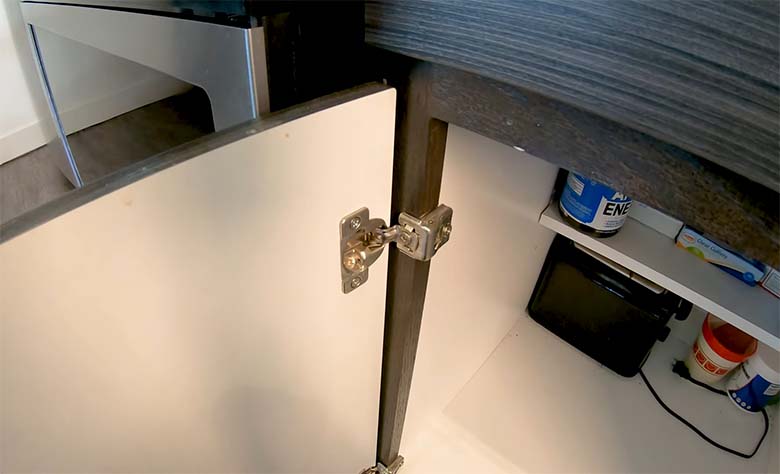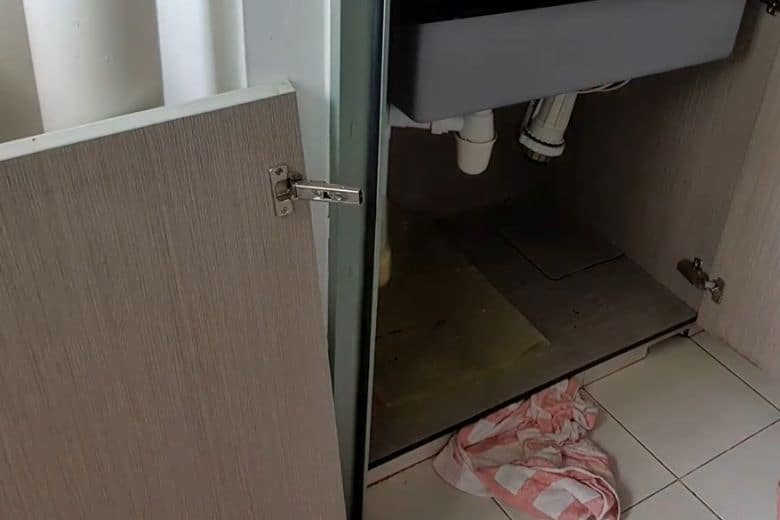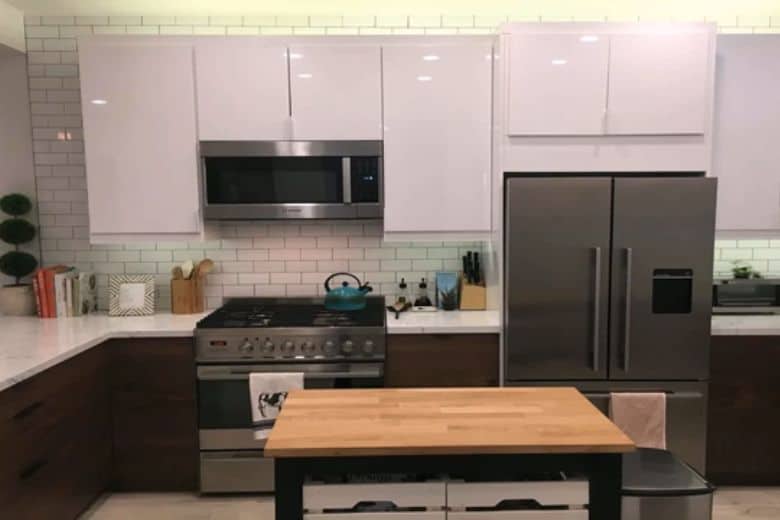A secure kitchen cabinet is essential for any kitchen, as it stores various valuable and useful items. A good door is necessary to keep everything inside the cabinet safe and pristine, preventing pests, dust, and residual build-up.
But what happens if your cabinet door doesn’t close smoothly? In that case, you will fall into great trouble. Because this can allow pests, ants, dust, and other residues to enter quickly. So it would be beneficial if, as a homeowner, you know how to fix kitchen cabinet doors that won’t close.
Consequently, we suggest you fix the kitchen cabinet door properly. As well as have explained the reasons why the cabinet door does not close properly. Therefore, show you a few ways to fix the problem with ease.
Continue reading to get full details.
Why Kitchen Cabinet Door Isn’t Closing:
The kitchen cabinet door should be able to close and open smoothly and efficiently, with no gap between the two parts when it is shut. Additionally, the hinges should all be properly aligned. Unfortunately, due to various causes, the door may not close correctly, leaving a tiny opening. As a result, dust particles, debris, and even pests and insects can enter the cabinet.
Various causes may be the root of the problem, such as misaligned hinges, a warped door, or even a problem with the cabinet frame itself.
A few identical reasons that are responsible for not closing the cabinet door are mentioned below:
- In most situations, a kitchen cabinet door fails to close correctly due to the hinges not operating optimally. It is doubtable that the hinges have become loose, preventing them from adequately holding the door in place. Additionally, if the hinges were not properly installed or damaged in some way, they would not be able to keep the door closed.
- In hot and humid weather and tropical regions, the relative humidity of indoor spaces may exceed 60%. It leads to excess moisture that causes wooden doors to expand. As a result, the door may not close accurately.
- Lastly, if the latching system is not installed correctly. Meantime, the cabinet door will refuse to latch and close rightly.
The above mention three are the most common reasons your kitchen cabinet door refuses to close. Now that you know the reasons, it’s time to see their fixation process.
Fixing Kitchen Cabinet Doors That Won’t Close
Now you know the common reasons that make cabinet doors tight and stiff. However, in the upcoming section, we have elaborately described the step-by-step process to help you fix the kitchen cabinet door.
let’s have e look.
Step 1: Inspecting the Reason for a Sticking Kitchen Cabinet Door
When the kitchen cabinet door doesn’t close, you must inspect it carefully. We recommend closing and opening the door a few times to find the actual reason quickly. If the door is sticking sideways, below, or above sections. These could be due to expansion caused by moisture in the summer.
On the other hand, if the hinge is loose or the latching system is not working correctly, these issues may need to be addressed.
Step 2: Removing Moisture
First, try removing the additional moisture from the wooden door of the kitchen cabinet. If you have a dehumidifier at home, you can place the device close to the kitchen cabinet. Running the dehumidifier for 10 to 12 hours will soak the moisture to help the door return to its original shape.
Alternatively, you may use a fan to improve the airflow if you don’t have a dehumidifier. It will also soak the moisture and help the door close properly.
Step 3: Sanding the Door
If the door is sticking with the frame, it is likely due to the expansion of the wood. To fix this, observe the door to identify the areas sticking with the frame. Once identified, use a sanding tool to sand these edges.
After sanding, apply stain or paint to the sanded edge of the door to give it a finished look. Lastly, use sandpaper to smoothen the door for a good appearance.
Moreover, if you need to sand the door widely, you must open it from the frame. The steps include:
- To determine which hinge to raise, you must observe the door by closing and opening it several times. Once you’ve identified the hinge, you can use a screwdriver to lift it or the pins underneath it.
- Tap the hinge with a hammer to remove it and lift the pins from the hinge. Once this is done, the door can take down.
- Securely place the door so you can reach the area needing sanding. Put a heavy object on the other side and top of the door to keep it in place. It will help to stop any movement.
- Once the door is secured, begin sanding it. Start by using coarse sandpaper to sand it. If more intense sanding is needed, you can use a sanding tool.
- Try occasionally closing the door in the doorframe to help determine how much sanding is necessary.
- Once the door has been determined to be closing properly, use fine-grit sandpaper to make the edges smooth.
- Lastly, after sanding the edge of the door, repaint it and securely mount it.
Step 4: Adjusting the Hinge:
You will need to tighten the screw at the back of the cabinet door to adjust the hinge. Use a screwdriver to tighten the screw until the door closes firmly. If the door still doesn’t close properly, you need to loosen the screw a bit. This will help adjust the door so that it closes properly.
If the hinge on your door has become loose, you may find it no longer closes properly. To remedy this issue, you can follow these steps to fix it.
- Adjust the top and bottom hinges if you have a self-closing door. Besides, ensure they are the same distance from the face of the door. Once the hinges are in the correct position, tighten the screws to secure them.
- If the gap between the kitchen cabinet side and the adjacent hinge is too large, the door will tilt and not close properly. To reduce the gap, turn the front adjustment screw counterclockwise.
- Finally, when the gap between the hinge and door is more than ¼ of an inch, you can widen it to ensure the door is fitted correctly.
You can make sure the cabinet door closes smoothly by tightening the hinge.
Frequently Ask Question:
Can I repair door closers?
Answer: Yes, you can door repair door closers. Depending on the type of door closer and the problem, it may be possible to repair the door closer yourself with the help of a professional. Alternatively, you may need to buy a new door closer and replace the existing one.
What kinds of door closers are there?
Answer: There are several types of door closers, including surface-mounted closers, concealed closers, floor-mounted closers, and overhead door closers. Surface-mounted closers are the most common type, typically mounted inside the door. Therefore, concealed closers are mounted inside the door frame and are usually installed in exterior doors. Floor-mounted closers are installed on the floor and are mainly used on fire doors.
On the other hand, overhead door closers are mounted above the door and are commonly used on high-traffic, heavy-duty doors.
How much is the cost of fixing a door that won’t close?
Answer: The cost of fixing a door that won’t close can vary depending on the cause of the issue. It can be as simple as replacing damaged hinges or tightening loose screws, costing around $50-$100.
If the problem is more complicated, such as a broken door frame or latch, the cost can range from $150 to $400 or more.
Conclusion
Finally, when your kitchen cabinet door won’t close properly, don’t worry! It’s a simple DIY woodworking project that requires minimal skill, and you can quickly fix it. Sand the door or tighten the hinge to allow the door to close securely. With these steps, you can easily restore the security of your kitchen cabinet and all its essential items.
Paul Newman is a blogger who writes about plumbing and home improvement. Over the past 20 years, I have worked as a plumber. My passion is to share my knowledge and experience with others to improve their homes.




